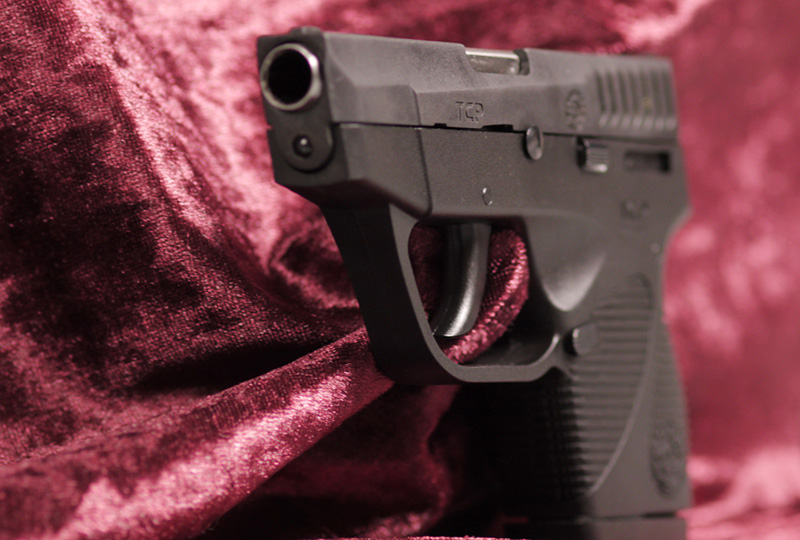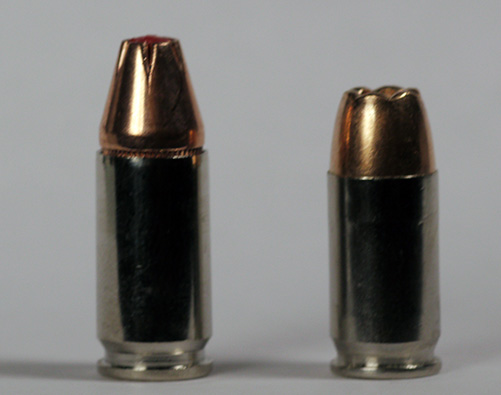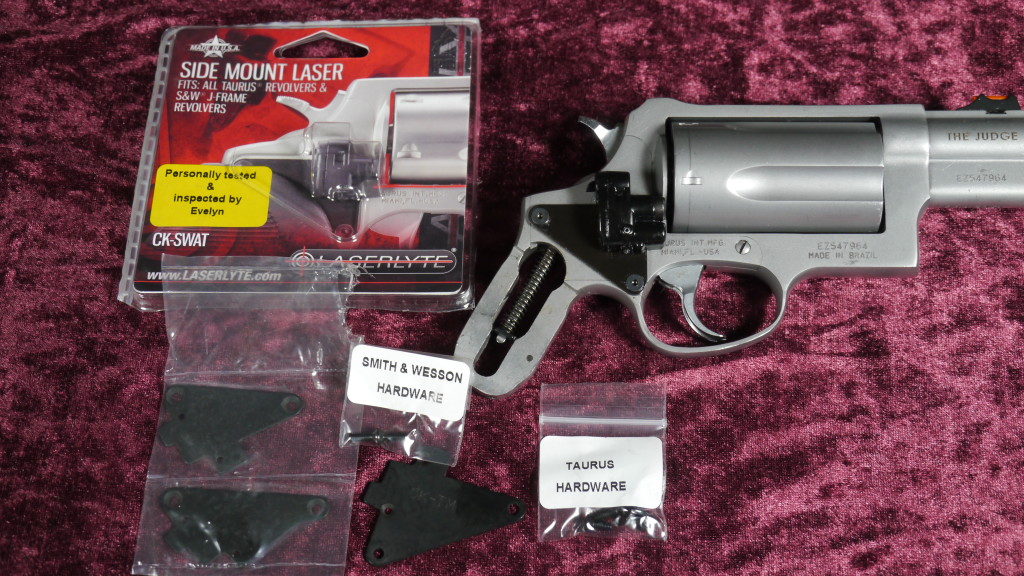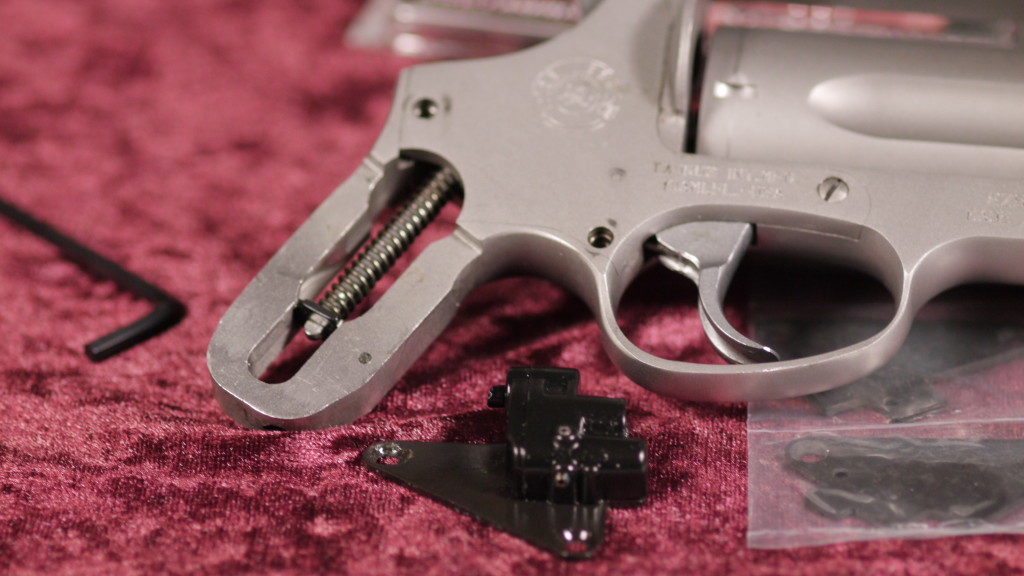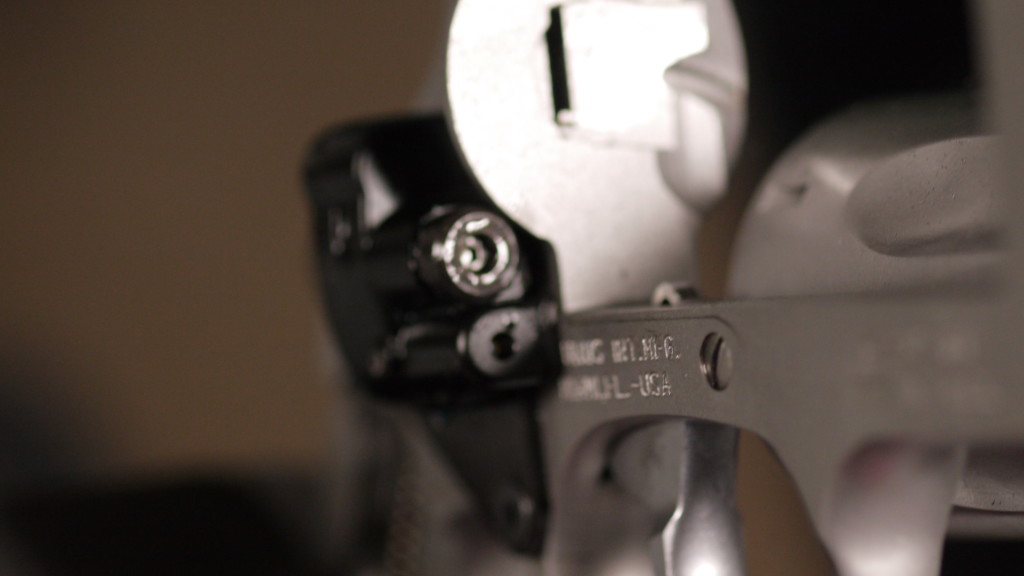Here at Shooting The Bull, I have a bit of a predisposition towards Taurus firearms. Not that they’re necessarily the highest quality, but — they’re extremely affordable, and in my experience they’re solid performers, and they offer a lot for the money. Plus, hey, Taurus goes well with the site’s name: I spend a lot of time Shooting The Bull (the Taurus pistol)…
Anyway — I picked up one of the most-talked-about Tauruses, a PT738 micro-pistol (also known as the TCP). This is a tiny pocket pistol which can easily be used for pocket carry or perhaps even ankle carry. It’s incredibly inexpensive (at $199, it’s about half the cost of the competition, the Ruger LCP) and it shoots very accurately and with a smooth trigger pull. I like it a lot.
But what to feed it? That’s the question, because, the bottom line is that it’s a .380 ACP pistol. And .380 ACP is generally considered a marginal round for self-defense purposes. Now, the TCP isn’t my primary everyday carry weapon; I carry a .45 ACP when I can, but sometimes you just need or want something lighter, smaller, easier to conceal, easier to carry, and the fact of the matter is that it’s difficult to imagine a scenario where you COULDN’T have the TCP with you. Sometimes a full-size or even compact .45 is just too big and doesn’t fit with what you’re wearing, but the tiny TCP can be a constant companion. And, hey, depending on how paranoid you may be feeling, you may want a backup gun, and the TCP is darn near perfect for that role. Except for the power of its main round, the .380 ACP…
… I am not going to be too much of a downer on .380. I think .380 is an okay choice. It’s not a great choice for your primary or only defensive pistol, but the .380 has enough oomph in it to serve the purpose of a defensive pistol, if it’s combined with the right ammo. I certainly wouldn’t want to be caught with anything smaller than a .380, but a .380 is right on the border of being adequate. I believe that with some ammo, it’s inadequate, but with other ammo it crosses the line to where it’s okay.
I don’t know about you, but if I’m betting my life on a pistol’s ability to defend me, I definitely want at LEAST “okay” and I’d certainly prefer “GOOD” or “GREAT”! Which is why, again, my daily carry is a .45, but that’s beyond the scope of this article. What I’m looking for here is — how good can this little .380 be? It shoots great, it’s very comfortable, it is extremely compact and portable, so if we can just find a type of ammo that delivers satisfactory results, well — how cool would that be?
I’ll tell you — it’d be pretty frickin’ fantastic.
So, I have commenced my Ammo Quest. I’m testing out various brands and types of ammunition to see how they perform specifically from the TCP (and, I would venture to say, the results from the TCP should be directly applicable to the Ruger LCP or any other comparably-sized, comparable-barrel-length .380 pistol). I’m conducting controlled testing using ClearBallistics.com’s ballistic gel, and a ProChrono chronograph. I’ll be testing for penetration and expansion, weighing and measuring the bullets, and coming to some conclusions about each particular ammo’s suitability for the task of personal defense.
Standards For Evaluation
The standard will I be judging against is the FBI report “Handgun Wounding Factors and Effectiveness.” This is the 1989 study commissioned after the “Miami shootout” wherein several direct hits on some determined shooters failed to actually stop or incapacitate them. The FBI report is the result of some exhaustive research to find out why bullets stop people, and what factors in ammunition performance are important in bringing about an effective quick stop. I won’t go into too much of it here (because, hey, I even linked to the report, so you can read it for yourself) but I just want to point out the two main takeaways that I’m going with:
1) Minimum Penetration
In a short summary, penetration is the most important factor in bullet performance; if a bullet doesn’t penetrate deeply enough to hit the vital organs, then nothing else matters. It doesn’t matter if you have perfect shot placement, if the bullet can’t penetrate deeply enough to affect what you were shooting at. And, it doesn’t matter how big the bullet is, if it doesn’t penetrate deeply enough to hit something that matters. If you are being attacked by a morbidly obese person, and you shoot a huge .45 caliber bullet with perfect placement right to the heart, but the bullet stops after penetrating just six inches of outer fat layers, well — it might hurt, and it’ll bleed, but it won’t actually physically incapacitate that attacker. Simply put, it’s GOT to penetrate deep enough to hit a vital organ, artery, or the central nervous system in order to force immediate incapacitation. Anything less is, well, less. The FBI report specifies a minimum acceptable penetration depth of 12″ in ballistic gelatin.
2) Bullet Size
This one’s simple — the bigger the bullet, the more damage it will do, and the more likely it will be to hit something vital. A little full-metal-jacket might penetrate deep enough, but it may be so small as to slip right between the heart and an artery, causing no significant damage; whereas a big expanded hollow point shot at the exact same point of aim might be so big as to hit both vitals. When it comes to damage, bigger is better. Once you have adequate penetration, you want the bullet to get as big as possible.
What Can The 380 Do?
The 380 starts off with its hands tied behind its back, as it’s not a very big bullet and it’s not very powerful. It is actually the same diameter as a 9mm bullet, but 9mm has so much more room in its casing for powder, and is designed to operate at such higher pressure, that it can propel a heavier bullet at faster speeds and expand more. 380 can’t quite accomplish that.
above: 9mm (left) and .380 ACP (right)
So what CAN a 380 do? That’s what I’m trying to find out. I know the .380 can and has been used effectively before. But can it do so consistently? Can it meet the FBI spec, especially when fired from a micro-sized pistol? Probably not, but let’s find out if it can, or at least, how close can it come? I mean, if I can find an expanding hollow point that grows to the size of a .45, and also penetrates a consistent 11″, well, that might not meet the FBI specification but I think most of us would agree that that would be totally acceptable for us; we are, after all, not the FBI (er, unless you are an FBI agent, I guess); and we’re not going to likely be put in a position of multiple attackers shooting from multiple angles and having to shoot through car doors and windshields and all the other things the FBI tests for. I’m not really interested in all that; I’m just looking for reasonable performance such that I can have reasonable confidence that the little TCP will be reasonably effective.
What about FMJ’s?
It’s true that a full-metal jacket bullet will indeed provide enough penetration, even more than enough penetration, from a .380. So why not just use FMJ’s? Well, there’s really three drawbacks to using FMJ’s for defensive purposes:
1) They don’t expand, so they’re usually relatively/comparatively small bullets, and smaller is not better when you’re looking for damage that will incapacitate an attacker.
2) They don’t inherently do a lot of damage, as they’re comparatively “slippery.” Soft tissue in a human body is usually quite flexible and stretchable, and an FMJ might just zing right through an attacker by pushing the tissue out of the way, without actually crushing or damaging much tissue. A hollow point expands with sharp petals that cut and slice their way through, causing vastly more damage; an FMJ isn’t all that damaging of a round. It’ll make a hole, yes, and if that hole were to be placed through the brain or spine that would certainly stop the attack, but — that’s a really tough shot to hit; in general, FMJ’s aren’t all that effective unless they’re bigger and heavier and they tumble. A typical 90-grain FMJ from a .380 isn’t likely to be a potent manstopper.
3) FMJ’s penetrate very deeply, perhaps too deeply. There’s a limit on how much penetration you want from a bullet. Generally 14 to 15″ is ideal. The FBI’s acceptable range is 12 to 18″. You don’t want more than 18″, because that’s a pretty good sign that the bullet is not going to stop lodged in your attacker, instead it’s going to exit out the back and keep going — and that’s risky, because it’s going to stop SOMEWHERE. If not in the attacker, where will it stop? A bystander? In general overpenetration is something that would ideally be avoided, and that’s one thing hollow points are great at; they normally expand to such a large size that they increase their drag so much that they come to a stop without exiting the target. The same can’t be said for FMJ’s.
So in general, I’m not really looking forward to using FMJ’s. If I can’t find any ammo that expands well and penetrates deeply enough, then I may have to resort to FMJ’s, but they’re certainly not my first choice.
The Quest
I know the odds are against me finding a reliable, consistent, deep 12+” performer in .380 ACP, but I’m going to give it a good thorough search. At this moment I’ve secured some of the most well-known defensive ammo brands, including Winchester Ranger-T’s, Speer Gold Dots, Winchester PDX1, Remington Golden Saber, and even some Remington 88-grain UMC hollow-points. There are lots more that I’d like to test, but the Great Ammo Drought of 2013 is making it hard to find .380 ammo. If I can find it, I’ll test it, and you can see the results right here on www.shootingthebull.net, or on my YouTube channel. If you have a request for a specific ammo to test, leave it in the comments and I’ll see if I can accommodate. Thanks for reading, and I hope you enjoy future installments of this Ammo Quest.

